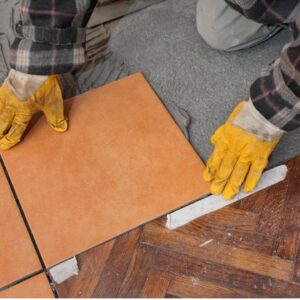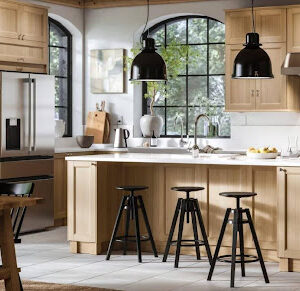Indoor swimming pools have been a popular addition to homes for decades. They provide a year-round source of exercise, entertainment, and relaxation. However, owning an indoor swimming pool comes with responsibilities – one of which is proper maintenance. Maintaining an indoor swimming pool can seem daunting, especially for first-time owners. But fear not! In this article, we will unravel the mysteries of indoor swimming pool maintenance and provide tips and tricks to keep your oasis sparkling clean and enjoyable for years to come.
The Benefits of Indoor Swimming Pools
Having an indoor swimming pool is a luxury that not many homeowners get to enjoy. However, there are many benefits to having one installed in your home. First and foremost, indoor swimming pools provide year-round entertainment and exercise options for you and your family. You can swim, play games or even relax in the comfort of your own home without worrying about the weather outside.
Another advantage of indoor swimming pools is their low maintenance requirements. Unlike outdoor pools that require constant cleaning and upkeep due to leaves, debris, and other environmental factors, indoor pools are protected from such hazards. All you need is a good glass cleaner for shower screens and regular cleaning of the pool area with basic pool cleaning supplies.
Indoor swimming pools also offer privacy that public facilities cannot match. You do not have to worry about sharing space with strangers or being exposed to germs from others using the same facility.

Understanding Pool Chemistry
Maintaining a clean and safe swimming pool requires an understanding of pool chemistry. The proper balance of chemicals is essential to prevent bacteria growth, algae formation, and eye irritation. The first step in managing your pool chemistry is regularly testing your water. Test strips or kits are readily available and easy to use.
One important chemical balance in pools is the pH level. It measures the acidity or alkalinity of the water on a scale from 0-14. A pH between 7.2-7.8 is ideal for swimming comfort and chemical effectiveness. If the pH level rises above this range, it can cause scaling and cloudy water, while lower levels can lead to corrosion of metal parts and skin irritation for swimmers. Another aspect of maintaining pool chemistry is using the right products for cleaning surfaces such as tiles, walls, or floors surrounding your pool area.
Equipment Maintenance And Cleaning
Equipment maintenance and cleaning are vital to keeping an indoor swimming pool in top condition. Proper pool equipment maintenance is essential to ensure that it functions effectively, efficiently, and safely. Equipment such as pumps, filters, heaters, and chlorinators need regular checks to ensure they are running smoothly. Please maintain them to avoid costly repairs or replacements.
Cleaning should also be a routine task for owners of indoor swimming pools. Regular cleaning keeps the water free from debris, bacteria, and other harmful organisms that can cause contamination or illnesses. In addition, using appropriate cleaning agents, such as chlorine or bromine, helps sanitize the water, ensuring it remains safe for swimmers.
Proper equipment maintenance and regular cleaning keep indoor swimming pools functioning effectively while protecting swimmers’ health. It is essential to schedule periodic inspections by qualified professionals who can identify issues before they become major problems requiring significant repairs or even complete system replacement. Investing time in these tasks ensures greater longevity for your pool equipment while providing a safe environment for everyone who enjoys it.
Water Quality And Filtration
Water quality and filtration are crucial aspects of indoor swimming pool maintenance. It is essential to ensure that the water in the pool is clean, clear, and free from harmful contaminants such as bacteria, viruses, and algae. The filtration system is vital in removing these unwanted particles from the water.
Different types of filtration systems are available for indoor swimming pools, including sand filters, cartridge filters, and diatomaceous earth (DE) filters. Sand filters are the most common filter used in residential swimming pools. They work by passing water through a bed of sand that traps dirt and debris. Cartridge filters use replaceable cartridges of pleated polyester material to trap particles from the water. Finally, DE filters consist of grids coated with DE powder that catches even smaller particles than sand or cartridge filters.
Regular maintenance of the filtration system is crucial for optimal performance. This includes regularly backwashing or cleaning out accumulated debris from sand or DE filters and replacing cartridges annually or as needed for cartridge filters. In addition, proper maintenance helps improve water quality by efficiently removing contaminants while extending your pool equipment’s lifespan.
Maintaining The Temperature And Humidity
Maintaining the temperature and humidity levels in an indoor swimming pool is crucial to ensure a comfortable swimming experience for users. The ideal temperature range for a pool is between 78-82°F, while the relative humidity level should be maintained at around 50-60%. To maintain these levels, it’s important to have proper ventilation and dehumidification systems in place.
High humidity levels can lead to condensation on walls and ceilings, which can cause also growth and damage to the building structure. Proper ventilation can help circulate air and remove excess moisture from the air. Dehumidifiers can also extract moisture from the air, preventing condensation buildup.
Maintaining proper water temperature is essential for user comfort and for preventing bacterial growth. Regularly testing and adjusting the water heater can help keep the water at a consistent temperature. Temperature and humidity levels ensure user comfort and help prevent costly damage to indoor pool facilities.
Troubleshooting Common Issues
An imbalanced pH level is one of the most common issues that indoor swimming pool owners face. Too much acid or alkaline in the water can cause skin irritation, corrosion of metal fittings and even damage to the pool surface. To fix this, a pH test kit should regularly monitor levels. If it’s too low, add sodium carbonate or baking soda to raise it. If it’s too high, add muriatic acid.
Another area for improvement is cloudy water, which can make swimming uncomfortable and unsightly. Cloudiness can occur due to poor filtration or a buildup of contaminants such as algae and bacteria. It’s important to clean filters regularly and shock the pool with chlorine or other sanitizers if needed. Another solution could be using a clarifier product that helps gather small particles together for easy removal through filtration.
Lastly, leaks are a major concern for indoor pools as they can lead to structural damage if left unaddressed. Leaks may occur at any point in the pool system, including pumps, pipes or even around fittings near lights, making them difficult to detect, sometimes requiring professional help from plumbers who specialize in repairing pools and spas. Regular inspections by professionals should be conducted once every year so problems are caught early before becoming severe enough to cause costly repairs down the road.
Conclusion
Successful maintenance of indoor swimming pools requires a regular cleaning routine. Keeping the water clean and clear is essential by checking and balancing its chemical levels regularly. Robust filtration systems are also necessary for efficient pool maintenance as they help remove contaminants from the water.
Another tip for successful maintenance is to monitor the pool pool temperature and humidity levels. High humidity in an indoor pool area can also lead to growth, which can cause respiratory problems for swimmers. In addition, regularly checking the pool pool equipment, such as pumps, filters, heaters, and valves, will ensure proper functioning and avoid costly repairs.
Maintaining an indoor swimming pool may seem daunting at first glance. However, a consistent cleaning schedule that includes monitoring chemical levels and filtration systems and keeping track of temperature and humidity levels while conducting regular equipment checks will ultimately lead to a well-maintained swimming environment.












Commented Posts